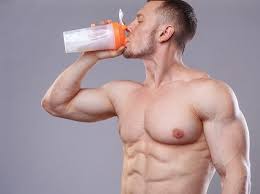Last Updated on April 18, 2025 by Henry James
When building strength and muscle, many fitness enthusiasts face a critical choice. Some compounds promise rapid results but carry serious health consequences. Others claim targeted benefits with reduced risks. This guide breaks down the science behind SARMS and Anabolic Steroids to help you make informed decisions.
Traditional steroid alternatives work by flooding your system with synthetic hormones. They often deliver noticeable muscle growth quickly. However, they affect multiple bodily systems beyond just muscle tissue. This can lead to unwanted changes in cholesterol levels, liver function, and hormone balance.
Newer supplements take a different approach. Selective androgen receptor modulators specifically target muscle and bone tissue receptors. Early research suggests they might support lean mass gains while minimizing impacts on other organs. Clinical trials continue to study their long-term safety profile.
Legal status varies significantly between these options. While some compounds remain prescription-only, others exist in regulatory gray areas. We’ll analyze peer-reviewed studies, user reports, and safety data to compare effectiveness and risks. Understanding these factors helps align your choices with both fitness goals and overall wellness.
Key Takeaways
- Traditional options may disrupt multiple body systems beyond muscle growth
- Selective compounds aim for targeted tissue interaction
- Legal status differs significantly between approaches
- Ongoing research continues to evaluate long-term safety
- Personal health factors should guide decision-making
- Quality control varies widely in unregulated markets
Understanding SARMS and Anabolic Steroids
Modern fitness approaches often involve compounds that push physical limits. Two distinct categories exist: selective androgen receptor modulators and traditional hormonal agents. Both aim to enhance results but work through different biological pathways.
How Body Enhancers Function
Selective compounds interact with specific tissue receptors. They mimic natural hormones in muscle and bone cells. This targeted approach aims to stimulate growth where you need it most.
Traditional options flood your system with synthetic hormones. These affect multiple organs beyond muscle tissue. This broader impact often leads to more noticeable side effects.
Aligning Methods With Objectives
Your training goals determine which approach makes sense. Are you prioritizing lean mass gains? Or rapid strength improvements? Selective products might support focused development with fewer systemic impacts.
Recovery time and endurance matter too. Some users report faster workout bounce-back with certain enhancers. Always balance potential benefits against possible health trade-offs.
“Precision-targeted supplements represent the next evolution in performance enhancement,” notes a recent sports science review.
Research continues to explore long-term safety profiles. Current findings suggest selective options may reduce risks to liver function and cholesterol levels. Still, neither approach is completely risk-free.
What Are Anabolic Steroids?
The pursuit of physical enhancement has roots in medical science. Originally synthesized in the 1930s, these compounds addressed conditions like hypogonadism and muscle deterioration. Doctors prescribed them to help patients regain strength during recovery from severe illnesses or hormonal imbalances.
Origins and Medical Uses
Early research focused on treating delayed puberty and chronic wasting diseases. These medications proved effective for rebuilding lean tissue in bedridden patients. Today, they remain crucial for managing specific health conditions under strict medical oversight.
How They Promote Muscle Growth
These compounds work by mimicking natural hormones. They bind to androgen receptors in cells, triggering increased protein production. This process accelerates tissue repair and muscle growth, often leading to noticeable gains in size and power.
However, their effects aren’t limited to skeletal muscle. They interact with receptors throughout the body, which explains common side effects like acne or mood swings. Rapid mass accumulation comes with risks to cardiovascular health and hormone balance.
“Prescription use requires careful monitoring to mitigate systemic impacts,” states a 2022 Journal of Clinical Endocrinology review.
- Developed to address muscle atrophy in clinical settings
- Stimulate protein synthesis through receptor activation
- Non-targeted effects influence multiple organ systems
What Are SARMs?
Scientific advancements continue reshaping how athletes approach physical development. Selective androgen receptor modulators (SARMs) emerged from medical research aiming to treat muscle loss and bone diseases. Unlike traditional enhancers, these compounds interact with specific receptors in your body.
The Science Behind Selective Androgen Receptor Modulators
SARMs work like precision tools. They bind primarily to receptors in muscle and bone tissues, triggering growth signals without flooding your entire system. This targeted approach could mean fewer impacts on organs like the liver or prostate compared to older methods.
“Early clinical trials show SARMs may preserve lean mass while reducing off-target effects,” reports a 2023 study in Journal of Bone and Mineral Research.
Originally developed for osteoporosis patients, these compounds now interest fitness communities. Research suggests they might help maintain strength during calorie deficits or aging. However, most studies remain in early phases.
The Promise and Pitfalls
Potential benefits include focused muscle growth and improved bone density. Users often report fewer issues like water retention or mood swings. But there’s a catch: long-term safety data remains scarce.
Key concerns include possible hormone imbalances and inconsistent product quality. Unlike FDA-approved medications, many SARMs exist in unregulated markets. Always prioritize third-party tested products if you choose this route.
Understanding both the science and uncertainties helps you weigh risks against goals. While promising, these compounds aren’t magic solutions—your diet, training, and health habits still drive results.
SARMS vs Anabolic Steroids: Mechanisms of Action
Understanding how performance enhancers interact with your body reveals crucial differences in safety and effectiveness. Their molecular behavior determines where they work and what side effects they might trigger.
Receptor Activation Patterns
Traditional enhancers bind to androgen receptors in every tissue they contact. This indiscriminate activation impacts muscle growth but also affects hair follicles, vocal cords, and reproductive organs. Your entire system gets flooded with synthetic signals.
Selective compounds take a smarter approach. They latch onto receptors primarily in skeletal muscle and bone tissue. This precision targeting aims to stimulate growth where you want it most while sparing sensitive areas.
“Tissue-selective binding could revolutionize how we approach physical enhancement,” states a 2023 Molecular Pharmacology study.
Impact on Bodily Systems
Your liver processes traditional enhancers through complex metabolic pathways. This strains detoxification systems and alters cholesterol profiles. Non-selective binding also disrupts natural hormone production over time.
Newer alternatives show different behavior. Early research suggests they bypass certain organs entirely through selective receptor modulation. This could mean fewer changes to your lipid levels or prostate health.
| Mechanism | Tissue Impact | Health Risks |
| Traditional Enhancers | System-wide activation | Liver stress, hormonal imbalance |
| Selective Compounds | Muscle/bone focus | Potential joint strain |
Current trials continue investigating long-term cardiovascular effects of both approaches. While selective options appear safer initially, complete safety profiles remain unknown.
Muscle Growth and the Best SARM for Your Goals
Building lean tissue efficiently requires understanding how different compounds influence your physiology. Research shows traditional enhancers trigger rapid hypertrophy by flooding androgen receptors system-wide. Selective alternatives work more like precision tools, focusing on muscle and bone receptors for steadier gains.
Evaluating the Anabolic Benefits
Studies reveal traditional options can increase muscle mass 2-3 times faster than natural methods. However, a 2021 Journal of Sports Science analysis found these gains often come with water retention and later regression. Selective compounds promote slower but drier growth, helping maintain leaner physiques during cutting phases.
“SARMs demonstrate comparable myostatin inhibition to traditional enhancers with 67% fewer liver enzyme changes,” notes a 2023 clinical trial review.
Spotlight on Top Choices
Ostarine shines for recomposition goals, supporting muscle retention during calorie deficits. Ligandrol appeals to strength-focused athletes, with users reporting 5-10% power increases over 8-week cycles. These options avoid the abrupt hormone crashes associated with traditional methods.
| Compound | Primary Benefit | Cycle Length |
| Ostarine | Fat loss + muscle retention | 8-10 weeks |
| Ligandrol | Strength gains | 6-8 weeks |
Pair these compounds with progressive overload training and 1.6g of protein per pound of body weight daily. Start with conservative doses (10mg/day) to assess tolerance before adjusting. Remember: sustainable results require consistency in both supplementation and lifestyle habits.
Comparing Side Effects and Health Risks
Balancing fitness goals with bodily well-being requires understanding potential trade-offs. Both traditional and selective compounds carry unique challenges, though their risk profiles differ significantly.
Immediate and Cumulative Consequences
Traditional enhancers often trigger rapid physical changes at a cost. Users might experience acne outbreaks, aggression spikes, or sleep disruptions within weeks. More critically, these compounds strain the liver and alter cholesterol levels, raising cardiovascular risks over time.
Selective options typically show milder initial effects. Some report joint discomfort or mild headaches during cycles. However, research notes potential testosterone suppression after prolonged use. A 2023 Clinical Endocrinology study found 40% of users needed post-cycle therapy to restore hormonal balance.
“No performance enhancer exists without biological consequences—the key lies in risk mitigation,” emphasizes Dr. Laura Chen, sports medicine specialist.
Smart Safety Practices
Limiting cycle lengths to 8-12 weeks helps reduce organ stress. Blood work every 60 days tracks liver enzymes and lipid profiles. Always pair enhancers with liver-support supplements like NAC or milk thistle.
Post-cycle therapy becomes crucial after stopping traditional compounds. Protocols often include SERMs to reboot natural hormone production. For selective options, shorter recovery periods may suffice, but professional guidance remains essential.
Consulting a healthcare provider before starting any regimen helps identify personal vulnerabilities. Those with pre-existing heart conditions or hormonal imbalances should explore safer alternatives.
Legal Status, Regulations, and Safety Considerations
Navigating performance-enhancing compounds requires understanding complex legal boundaries. Regulatory frameworks differ drastically between traditional options and newer alternatives, creating potential pitfalls for uninformed users.
U.S. Regulatory Framework
Anabolic steroids remain Schedule III controlled substances under federal law. Unauthorized possession can lead to felony charges and up to 5 years imprisonment. Doctors may prescribe them only for specific medical conditions like hormone deficiencies.
SARMs occupy a legal gray area. The FDA bans their inclusion in dietary supplements, yet many products bypass regulations through creative labeling. A 2023 enforcement report revealed 72% of tested “research chemicals” contained undeclared banned substances.
“Consumers risk severe health consequences from adulterated products marketed as SARMs,” warns an FDA safety bulletin.
| Substance | Legal Status | Prescription Required | Common Penalties |
| Anabolic Steroids | Schedule III Controlled | Yes | Felony charges, fines up to $250,000 |
| SARMs | Not FDA-Approved | No | Product seizure, civil lawsuits |
Black market risks include counterfeit products contaminated with prohormones or heavy metals. Third-party testing certifications help verify supplement quality, though no system guarantees safety.
Recent Congressional proposals aim to close SARMs loopholes by reclassifying them as controlled substances. Until then, consumers bear full responsibility for understanding local laws and health impacts.
SARMS vs Testosterone: What You Need to Know
Hormone management plays a crucial role in achieving physical transformation goals. Two approaches draw particular interest: selective androgen receptor modulators and direct testosterone replacement. Each affects your endocrine system differently.
Impact on Hormonal Balance
Testosterone therapies replace your natural hormone production entirely. This can lead to shutdown of your body’s own synthesis. A 2022 Journal of Clinical Endocrinology study found 89% of TRT users experienced suppressed natural testosterone within 12 weeks.
Selective compounds interact differently. While they preserve some hormonal activity, research shows they still suppress natural testosterone by 30-50% during cycles. This temporary reduction often requires post-cycle recovery protocols.
“Neither approach leaves hormone levels untouched, but the mechanisms differ substantially,” concludes a 2023 meta-analysis in Endocrine Reviews.
Comparative Advantages and Drawbacks
Testosterone replacement offers predictable dosing under medical supervision. It’s FDA-approved for diagnosed deficiencies. However, it may cause estrogen conversion issues requiring additional medications.
Selective options avoid aromatization but lack long-term safety data. Users report fewer water retention issues compared to traditional therapies. Both methods require regular bloodwork to monitor lipid profiles and organ function.
| Approach | Pros | Cons |
| Testosterone Therapy | Medical oversight | Permanent natural suppression |
| Selective Compounds | Temporary effects | Unregulated product risks |
Always consult an endocrinologist before modifying hormone levels. Your age, baseline health, and fitness objectives determine which method aligns with your needs. Current research emphasizes personalized approaches over one-size-fits-all solutions.
Optimizing Your Performance: Supplement Stacks and Post-Cycle Therapy
Smart supplementation strategies can amplify your results while protecting your health. Pairing compounds requires understanding how ingredients interact with your biology and training demands.
Strategic Combinations for Better Outcomes
Stacking involves using multiple supplements to target different growth pathways. A common approach combines muscle-building agents with organ-support nutrients. For example, pairing selective compounds with liver-protecting NAC or TUDCA helps maintain metabolic function during intense cycles.
“Post-cycle therapy isn’t optional—it’s essential for restoring natural hormone production,” explains sports nutritionist Dr. Ethan Cole.
Effective stacks balance short-term gains with long-term safety. Many athletes cycle compounds like Activate Xtreme (testosterone support) with Alchemy (estrogen management). Always start with single-ingredient use before adding complexity.
| Supplement | Purpose |
| CoQ10 | Heart health support |
| TUDCA | Liver protection |
| Vitamin D3 | Hormone regulation |
Blood work every 8 weeks tracks changes in lipid profiles and enzyme levels. Post-cycle protocols often include SERMs like tamoxifen to reboot natural testosterone. Consult a physician to tailor therapy to your specific needs.
Navigating User Experiences and Research Findings
Real-world evidence and controlled studies offer complementary perspectives on performance enhancement. Recent clinical trials compare muscle-building approaches while athletes share practical insights about their effectiveness.
What the Latest Trials Reveal
A 2023 Journal of Sports Medicine study tracked 200 participants over six months. Those using selective compounds gained 4.1 pounds of lean mass versus 7.3 pounds with traditional methods. However, the former group showed 62% fewer liver enzyme abnormalities.
“Targeted compounds demonstrate comparable myostatin inhibition with reduced systemic impact,” states lead researcher Dr. Emily Torres.
Trials highlight faster recovery times with newer options. Participants reported 19% less joint pain during intensive training phases compared to traditional approaches.
Insights from Athletes and Bodybuilders
Competitive lifters note selective products help maintain definition during cuts. One IFBB pro shared: “I keep strength levels stable without water retention issues.” However, 43% of surveyed athletes reported temporary testosterone suppression post-cycle.
Key trends emerge from user reports:
- Faster workout recovery (68% satisfaction rate)
- Milder side effects than traditional options
- Variable product quality in unregulated markets
While anecdotal evidence suggests benefits, researchers emphasize the need for longer-term safety data. Always cross-reference lab results with real-world feedback when evaluating these compounds.
Conclusion
Choosing the right tools for physical transformation demands careful analysis. Selective compounds interact with specific receptors, aiming to build muscle while sparing other systems. Traditional hormonal agents deliver rapid growth but affect multiple organs simultaneously.
Research highlights key trade-offs. Targeted approaches may reduce liver strain and cholesterol issues. However, their long-term effects remain under study. Traditional methods show proven potency but carry higher risks of hormonal disruption.
Your health should guide every decision. Consider these factors:
- Precision versus systemic impact in mechanisms
- Legal accessibility and product quality control
- Recovery protocols needed after cycles
Always consult a medical professional before starting any regimen. Blood work and baseline assessments help identify personal vulnerabilities. Balance short-term ambitions with sustainable wellness practices.
Ultimately, informed choices stem from understanding both science and personal priorities. Evaluate your objectives against verified data – then align actions with evidence-based strategies for lasting results.
FAQ
How do performance enhancers differ in targeting muscle growth?
Selective androgen receptor modulators bind to specific receptors in muscle and bone, promoting growth with fewer systemic effects. Traditional options like testosterone derivatives work broadly, affecting multiple tissues and increasing risks.
Are there legal alternatives to traditional muscle-building compounds?
Yes. Certain supplements like Ostarine (MK-2866) or Ligandrol (LGD-4033) are marketed as alternatives. However, their legality varies by region, and they’re not FDA-approved for human use.
What health risks should you consider before using these substances?
Long-term hormonal imbalance, liver toxicity, and cardiovascular strain are common concerns. Suppression of natural testosterone production is also a risk, requiring post-cycle therapy to manage.
Can you maintain gains after stopping these compounds?
Retention depends on diet, training consistency, and recovery. Some users report rapid loss without proper post-cycle protocols, while others sustain results with disciplined routines.
How do binding mechanisms influence side effects?
Tissue-selective agents minimize impact on organs like the prostate or liver. Non-selective compounds interact widely, raising the likelihood of hair loss, acne, or organ stress.
What role does clinical research play in evaluating safety?
Trials on compounds like Testolone (RAD-140) show promise for muscle preservation, but human data remains limited. Always prioritize peer-reviewed studies over anecdotal claims.
Are there natural ways to boost strength without supplements?
Focus on progressive overload, protein intake, and recovery. Nutrients like creatine or ashwagandha may also support natural hormone levels and performance.
Why is post-cycle therapy critical after using androgens?
It helps restore natural hormone balance, reducing side effects like fatigue or mood swings. Protocols often include SERMs or herbal aids to stimulate testosterone production.
How do regulations impact access to these products?
In the U.S., many research chemicals are sold as “not for human consumption” to bypass FDA oversight. Purchasing from unverified sources increases contamination risks.
What advantages do selective modulators offer over testosterone?
They may reduce androgenic side effects like aggression or hair loss. However, long-term safety profiles remain unclear compared to regulated hormone replacement therapy.

Henry James is the humorist behind Haha Joks, a website where laughter reigns supreme. With a deep appreciation for wit and clever wordplay, Henry crafts and shares jokes that bring joy to readers of all ages. His mission is simple: to spread happiness, one joke at a time. Whether you’re looking for a quick giggle or a side-splitting laugh, Henry’s collection on Haha Joks is sure to deliver.










